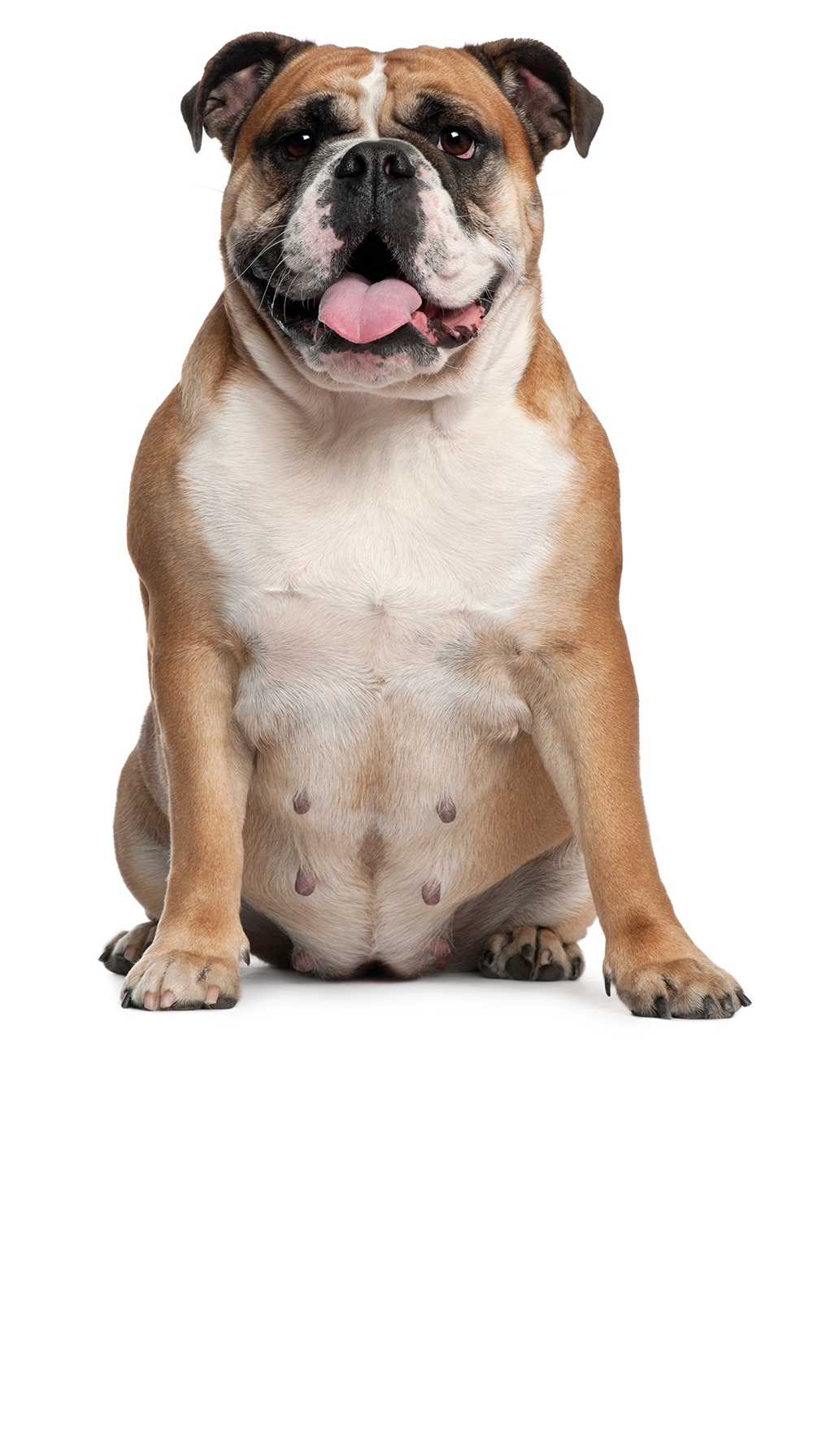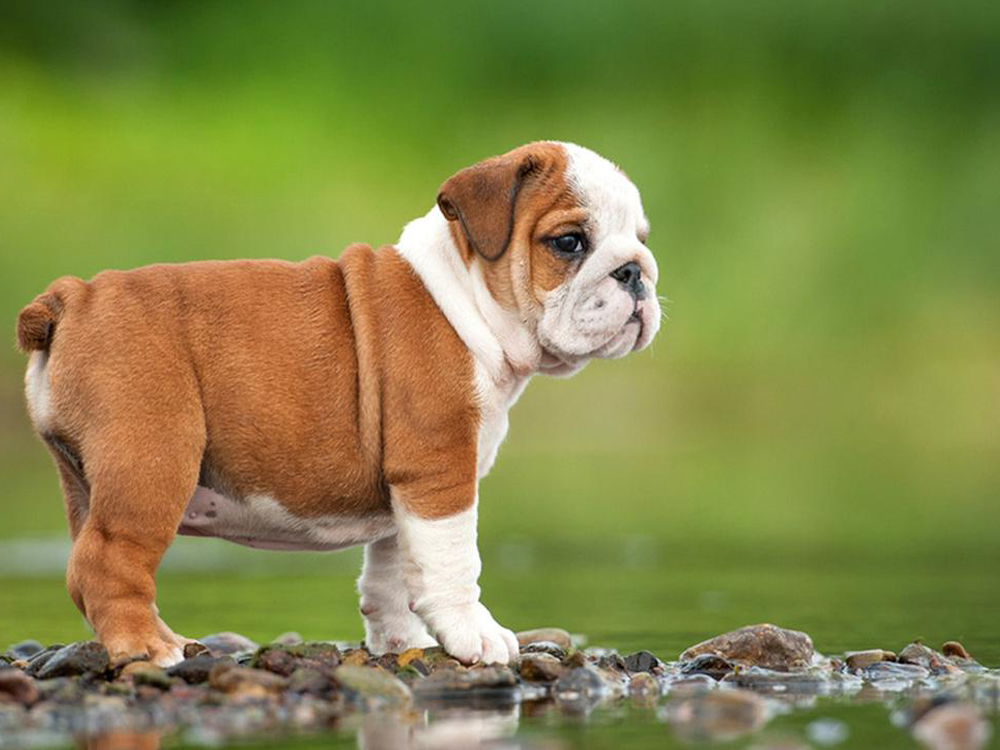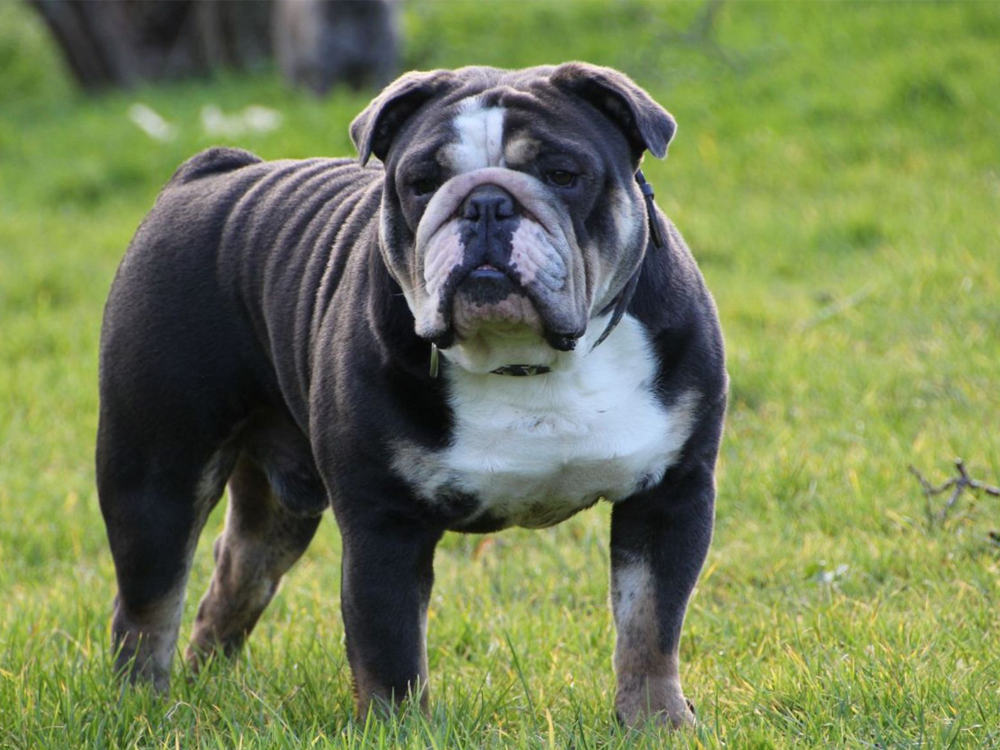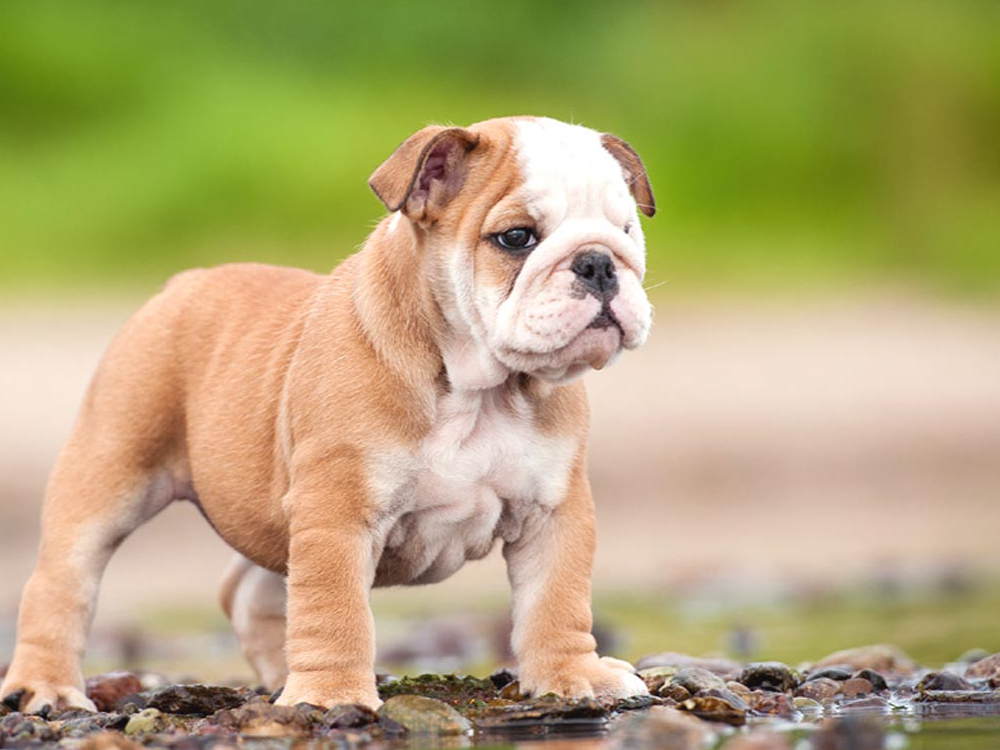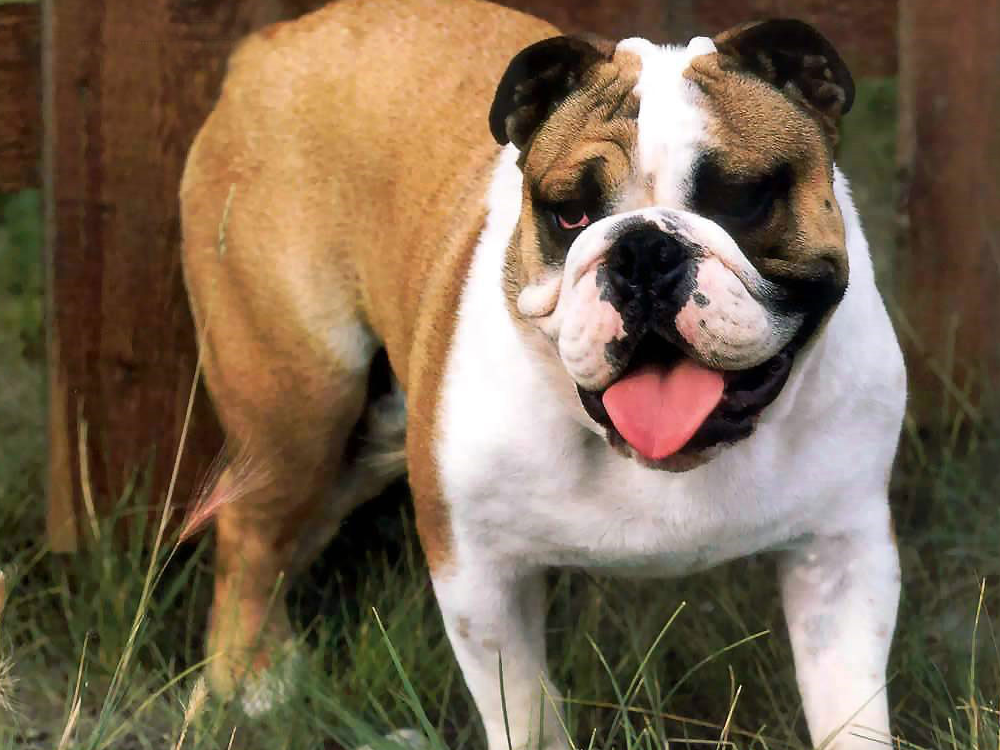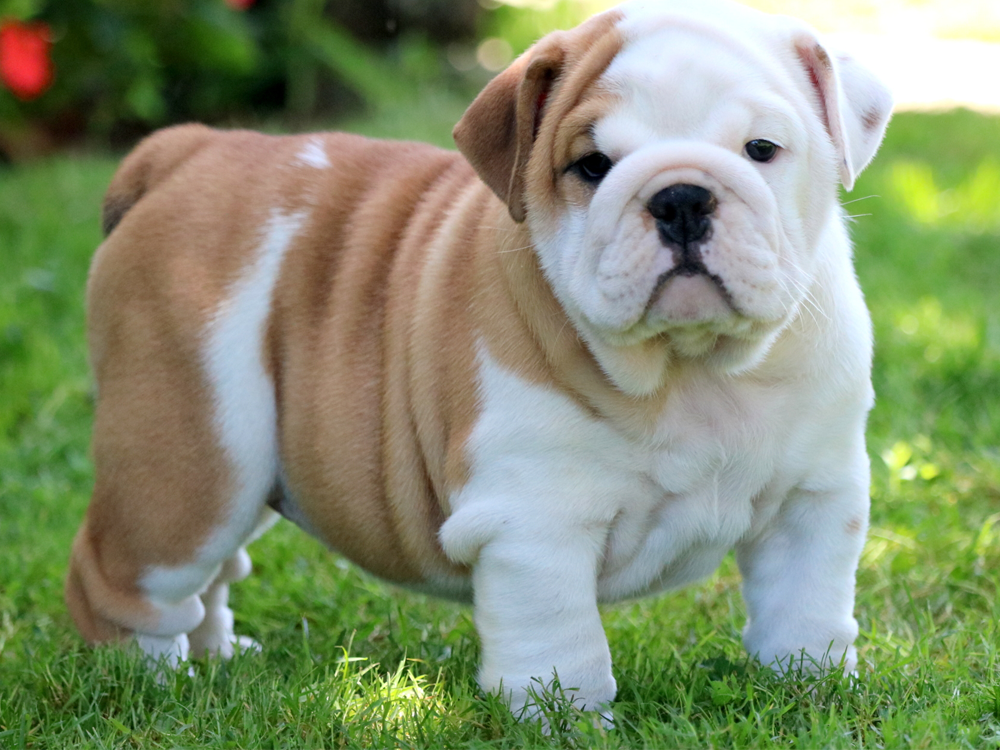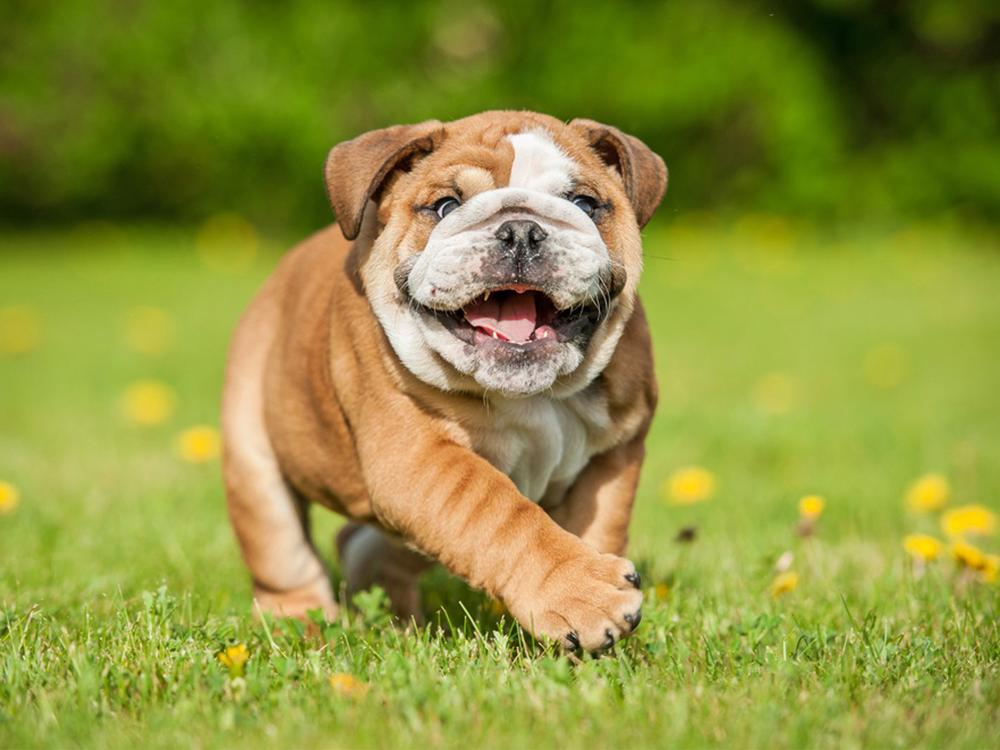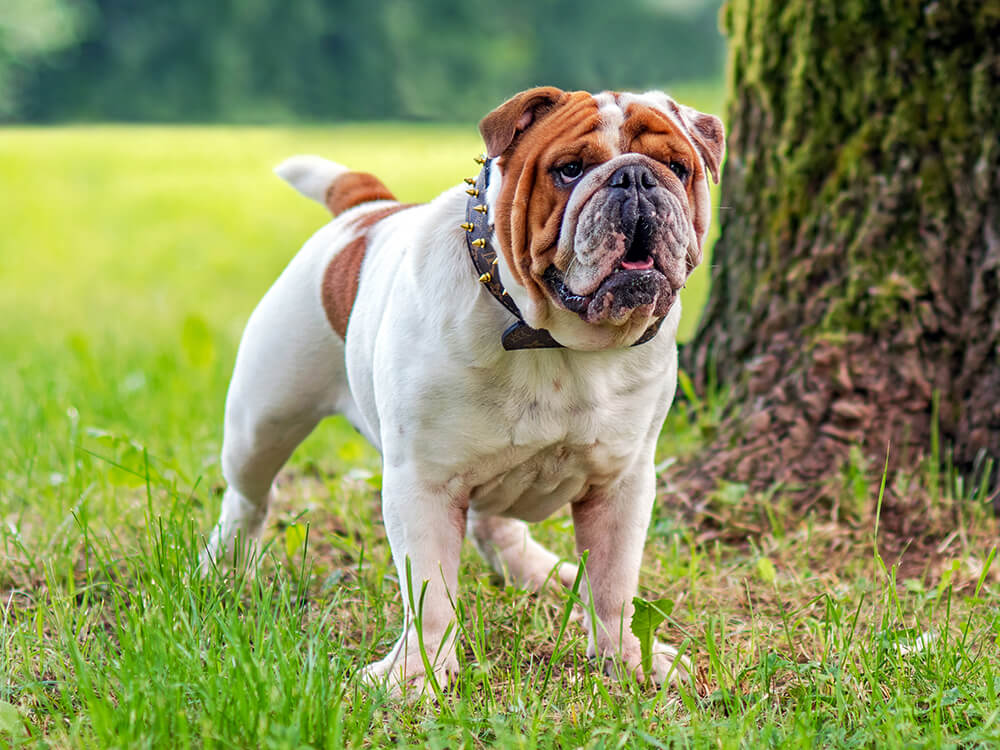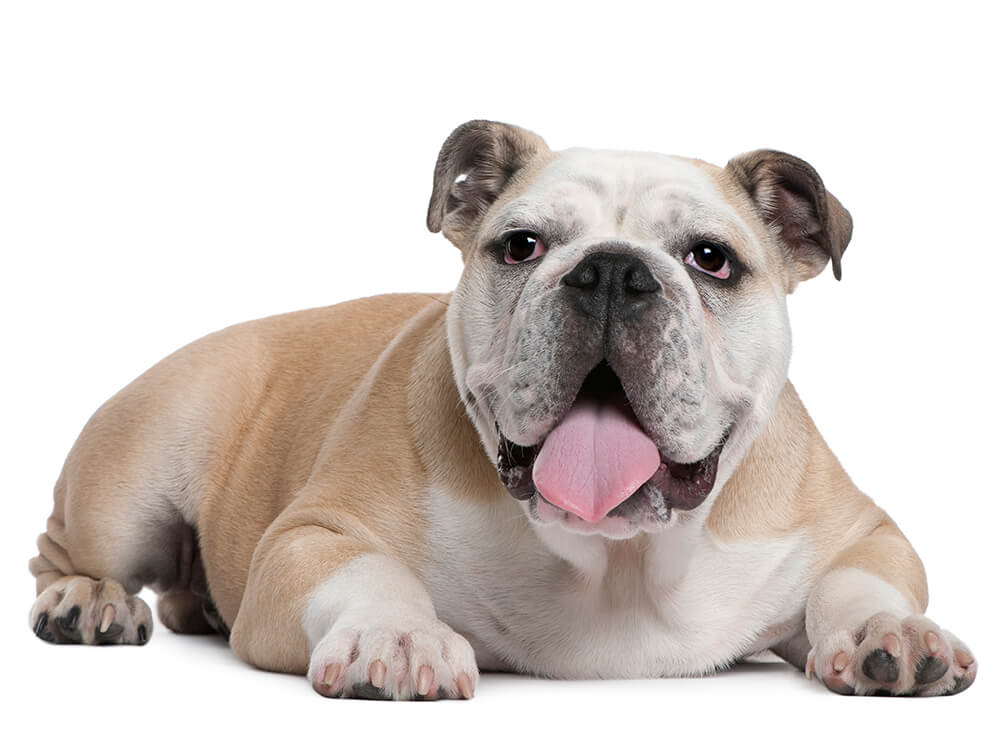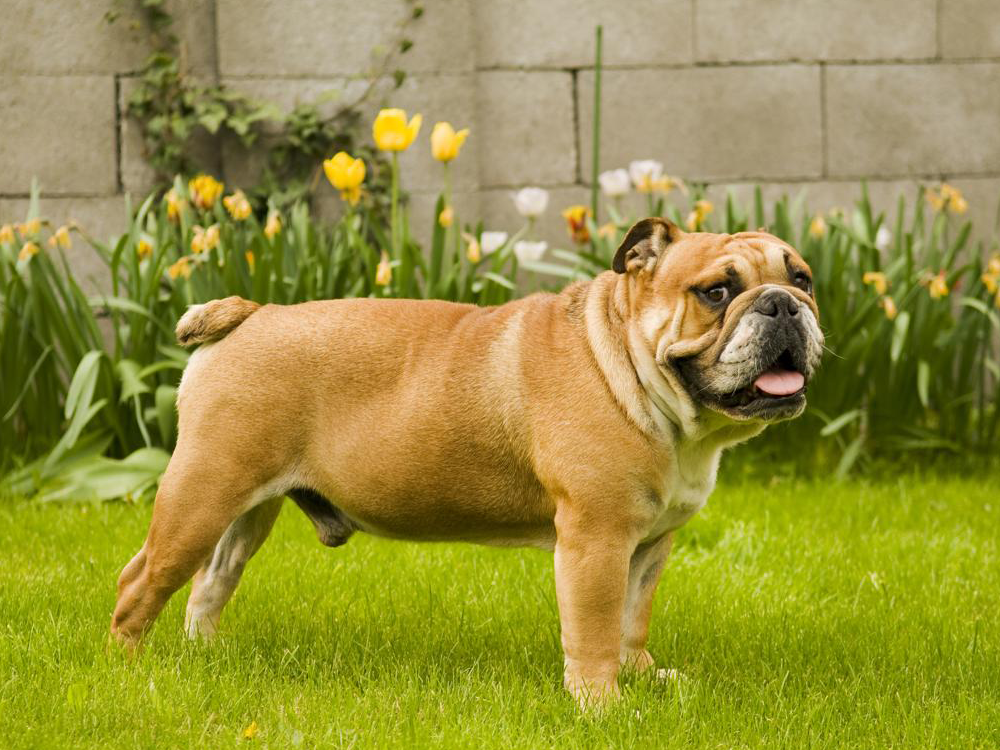
English Bulldog Breed Pictures
Vital Breed Stats
| Height: | 31 - 40 cm M | 31 - 40 cm F |
| Weight: | 24 - 25 kg M | 22 - 23 kg F |
| Life Expectancy: | 7 - 10 years |
| KC Registered: | No |
Breed Characteristics
| Size: |  |
| Grooming: |  |
| Exercise Level: |  |
| Trainability: |  |
| Barking Level: |  |
| Good with Children: |  |
| Good with other pets: |  |
| Affectionate: |  |
| Protective: |  |
| Cost to Keep: |  |
Give a thumbs up if you love the English Bulldog

0
More About the Breed
History
The English Bulldog is considered the original and ancestor of all breeds of Bulldogs. Originating entirely in England in the 1500s from Mastiff-type dogs, the earliest breed had a violent history as it was created for the purpose of bull baiting and fighting. The vicious and aggressive dogs that were immune to pain would grab onto the bull's nose and shake it roughly until it dies. This was mainly the people’s form of entertainment often advertised on television that people bet on. It was also believed that this process tenderises the bull’s meat as it thins the blood.
In 1835, bull baiting was finally illegalised in England. The Bulldog was re-engineered from a ferocious and savage fighter to a gentle and affectionate companion. Only the docile ones were bred to eradicate its aggressive tendencies. It is now hard to believe that the dog that used to be merciless has become one of the mellowest breeds.
Appearance
The Bulldog weighs between 40 and 50 pounds, and stands 28 to 38 centimetres at the withers. It has an iconic appearance, which is why the breed often becomes a mascot or part of cartoon shows. The Bulldog is a compact and broad dog with a big head and a wrinkly forehead. It has thick shoulders and chest, and sturdy limbs. It has a droopy upper lip and undershot lower jaw. Because of its flat nose, expect a lot of snorting, snuffling and flatulence.
According to The Kennel Club, the colour of the Bulldog should be whole or smut with black mask or muzzle. The standard colours are brindle, red, white, fawn, fallow, as well as pied. Black, Dudley and black-with-tan are considered highly undesirable.
Grooming
The breed is relatively low maintenance, clean and a moderate shedder. It has a short, smooth, straight and glossy coat that only requires weekly brushing. Bathing can be done as needed, when it is visibly dirty or it starts to have that doggy smell. It is important to wipe its face with a damp cloth or baby wipes to clean its wrinkles and tear stains.
To avoid dental problems, make sure that you brush the Bulldog’s teeth at least twice a day and provide it with dental chews, which can help in maintaining good oral health. Also trim its nails to prevent painful overgrowth. Its ears should regularly be cleaned and skin checked for ticks and fleas.
Temperament
Intelligence
Bulldogs can be slow learners but are able to retain what they have learned. Training should involve a lot of patience and food as positive reinforcements. They tend to be lazy and stubborn and would prefer to be couch potatoes than do physical activities. Their low energy level is perfect for families and owners who want a laid-back dog. However, a few minutes of light exercise daily is important to avoid obesity, which they are prone to.
Before getting a dog, it is important to do your research and learn about the general characteristics of breeds. That being said, other factors help determine the overall personality and temperament of dogs. It is best to provide a loving home and set out rules to bring out the best versions of your pets.
Nutrition
- Senior and less active: up to 1,000 calories daily
- Typical adults: up to 1,200 calories daily
- Physically active/working dogs: up to 1,300 calories daily
Feeding
Health
Exercise
Cost of Ownership
Your expenses in owning a Bulldog start with purchasing a well-bred Pedigree puppy, which is one of the most expensive breeds. Would you believe that to buy English Bulldog puppies cost between £1,000 and £4,000? Some with championship lines are even pricier. Insurance costs for this breed usually start at £60 a month for basic coverage.
Initial costs for equipment and supplies will be £200. Food and treats will set you back around £40 per month, and vet fees can go as much as £1,000 for routine check-ups and preventive care. Also be prepared for other veterinary costs if your pet would require treatments or surgery not covered by insurance. The total average expenses of getting an English Bulldog will roughly be around £150, depending on your pet insurance.
Is an English Bulldog Right for You?
- Buying an English Bulldog puppy is expensive.
- This medium-sized breed is great for first-time owners because of its calm and laidback temperament.
- The Bulldog has a flat nose so you can expect a lot of snorting, snuffling and flatulence.
- As a lazy breed that would rather lay on the couch, it is prone to obesity so it must be exercised appropriately.
- It is a slow learner but has a good memory retention.
- The Bulldog is extremely patient and tolerant of kids.
